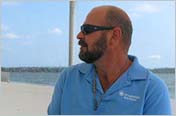|
|
photo by Ken Howard
|
|
Poplavskaya and Kaufmann
|
| ....................................................................................................................................................................................... |
The Metropolitan Opera, which opened its doors with Charles Gounod’s “Faust” on October 22, 1883, has a new updated production of the work, replacing the one that was new in 2005. The premiere of this newest “Faust” took place on November 29 and it sticks around for a total of 14 performances this season. The second night, on December 3, is discussed here. More on the trappings later—let’s start with the good part: the musical performance, persuasively paced by Yannick Nézet-Séguin.
Jonas Kaufmann, the new protagonist, sings Faust in a baritonal tenor, which works for me—so did the Faust of my youth, the New York City Opera’s Michele Molese, who sang the role opposite Beverly Sills and Norman Treigle. Kaufmann reins in his dark-timbred instrument for some graceful soft singing, in his first exchange with Marguerite, which he follows with a breathtaking diminuendo on high B in the phrase “Je t’aime;” and in “Laisse-moi” and “Éternelle,” with her, in the garden scene. He saved the ending of “Salut! demeure chaste et pure,” on the evening considered, after his high C had gone awry, with another skillful diminuendo.
The lyric role of Marguerite makes for a fine fit for Marina Poplavskaya, much more than did her two Verdi assignments last season, the dramatic Elisabetta in “Don Carlo” and high-lying, florid Violetta in “La Traviata.” For the heftier music of the church scene, the soprano summoned her Maria Callas-like sound, and that worked as well.
René Pape, returning to the role of Méphistophélès, is in full command for all the major solo moments—the irreverent brindisi “Le veau d’or;” the invocation to the night, “Il était temps … O nuit! Étends sur eux ton ombre;” and the mocking serenade, “Vous qui faites l’endormie”—and more. What a wonderful, suave artist!
Russell Braun, the new Valentin, appears unfazed by the high tessitura and individual high notes of entrance cavatina “Avant de quitter ces lieux.” When he joins voices with Faust and Méphistophélès, just before his death scene, Braun’s high baritone, Kaufmann’s dark tenor, and Pape’s polished bass boast a similar ring, but this is far less troubling than having three sopranos, with similar silvery sounds, as the heroines of “Don Giovanni,” as happened earlier this season.
Michèle Losier, Wendy White, and newcomer Jonathan Beyer make worthy contributions as Siébel, Dame Marthe Schwerlein, and Wagner respectively. Nor can chorus and orchestra, with major responsibilities, under Nézet-Séguin’s baton, be faulted.
The production team for this “Faust,” shared with the English National Opera—director Des McAnuff; designers Robert Brill (set), Paul Tazewell (costumes), Peter Mumford (lighting) and Sean Nieuwenhuis (video); and choreographer Kelly Devine, all making Met debuts—have banished the Middle Ages and Germany; have seen fit to update the action to the period from World War One to World War Two, presumably in the United States; and equate composer Gounod, librettists Jules Barbier and Michael Carré, and playwright Johann Wolfgang von Goethe’s philosopher Faust with physicist J. Robert Oppenheimer, father of the atomic bomb, who, as “Dr. Atomic,” was already turned into an operatic figure by John Adams and Peter Sellars. Doughboys and men and women in white lab coats dominate the scene here. The bomb puts in its first appearance, as a work-in-progress, hanging overhead, before the first act is over. Instead of a Witches’ Sabbath ballet, and pageant of the major sirens of history, the abbreviated Walpurgis Night shows the mushroom cloud of the test bomb in the desert and demons at work on the actual bomb.
If the devil is in the details, a number of them deserve comment. Marguerite sings both her ballad of the “Roi de Thulé” and restored, agitated “Il ne revient pas,” when she appears visibly pregnant, seated before a vintage sewing machine instead of a spinning wheel, a valid enough substitution. Méphistophélès, who can command fire, can also change water into wine—the potent potable he conjures up appears in a water cooler—“et Satan conduit le bal,” indeed—he controls the dancers at the inn like puppets on strings—not a new idea, but an effective one. When Faust appropriates Siébel’s bouquet of flowers as his own gift for Marguerite, roses appear everywhere, thanks to Méphisto’s magic. They are as red as blood, the devil, and all other things scarlet, and make for a striking visual image.
There is a photographer, not as intrusive as the wedding photographer Mary Zimmerman called for in “Lucia di Lammermoor,” on hand for shots of the soldiers as they go off to and return from war. When his flash goes off for the latter, one of the doughboys freaks out, reliving, no doubt, ‘the rockets’ red glare’ and ‘bombs bursting in air,’ over the battlefield. Valentin brings Marthe her dead husband’s helmet and she bursts into tears, a far cry from her reaction when she first gets the news and launches into a flirtation with Méphistophéles.
As always, there is no explanation of why Méphistophélès crumples to the floor when Valentin and his comrades brandish a couple of crosses, but is up to a confrontation with Marguerite, in the church, beneath a huge cross. Nor are we enlightened about why all of these folks in white coats are so intent on singing hymns and prayers at her here. At the end of this scene, Marguerite gives birth and drowns her baby in the baptismal font.
After Méphistophélès, a dapper post-Edwardian gentleman in, at first, a white suit, and then a black one, restores Faust’s youth, the protagonist dresses just like his diabolical mentor—as apt an idea as having Don Giovanni and Leporello sport similar looks.
Marguerite, who is first seen working in Faust’s lab and carrying a red rose, goes to her death, shell-shocked and burned out, in a plain blue smock, shorn of her long locks, and clutching empty swaddling clothes. The opera ends as it began, in Faust’s laboratory, as he makes good on his much earlier threat to commit suicide and, aged once more, collapses on the floor. Was the action all in his mind?
The singing and orchestral performance save this “Faust”—eventually, we won’t give the concept a second thought. Remaining performances are on December 10 at 1 p.m., which will be transmitted worldwide as part of the Met: Live in HD series and broadcast over the Toll Brothers-Metropolitan Opera International Radio Network; 6, 13, 20, 23 and 28 at 7:30 p.m., and 17 at 8 p.m.; and January 5, 9, 13, 15 and 19, 2012, at 7:30 p.m. Roberto Alagna sings Faust in the last two hearings of the year, when Malin Bystrom makes her debut as Marguerite. Joseph Calleja assumes the title role, Ferruccio Furlanetto sings Méphistophélès, Kate Lindsey is Siébel, and George Petean plays Valentin after the New Year, when Alain Altinoglu conducts. Brian Mulligan takes over for Braun on December 23. Pierrre Vallet makes his debut conducting the December 17 “Faust.” For tickets, priced from $25 to $345, visit www.metopera.org, telephone 212/362-6000, or come to the Met box office in Lincoln Center on Monday through Saturday, from 10 a.m. to 8 p.m., or Sunday, from noon to 6 p.m. Discounted rush tickets are available, on the day of performance, as well.
|














